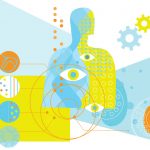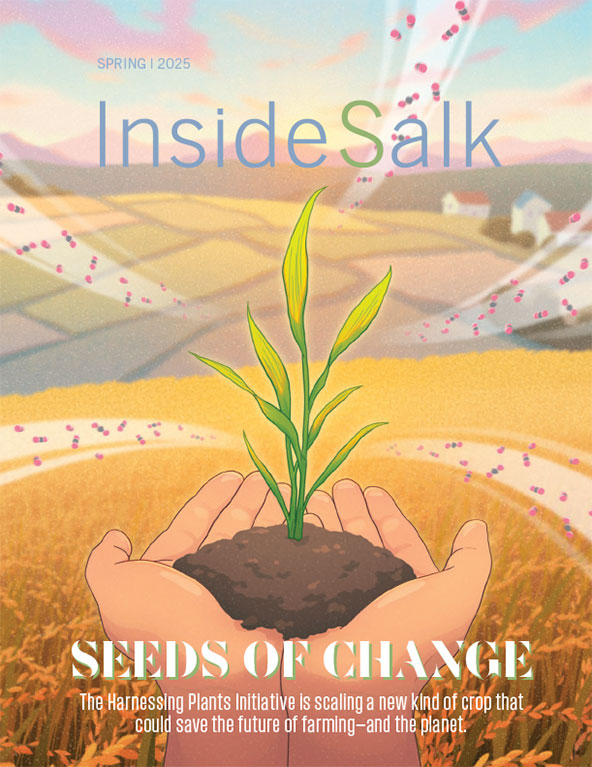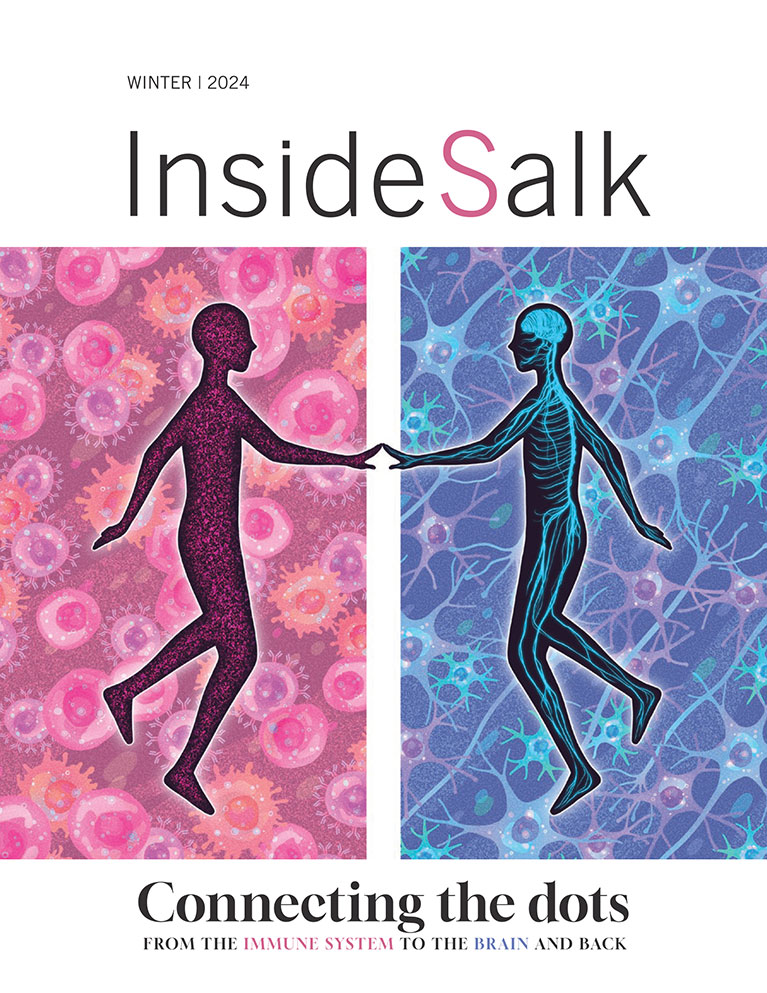Professor and co-corresponding author Terrence Sejnowski, along with collaborators at the University of Texas at Austin and the University of Otago, in New Zealand, found that connections in the brain not only expand as needed in response to learning or experiencing new things, but that others shrink as a result. The work could shed light on conditions in which memory formation is impaired, such as depression or Alzheimer’s disease.
Neuroscience
How the brain tells our limbs apart
Neural regulation by the regions of the spinal cord that connect to the arms and those that connect to the legs are not well understood. A study in mice by Professor Samuel Pfaff, first author Marito Hayashi, bioinformatics specialist Shawn Driscoll and others revealed contrasts in the neurons that underlie these various types of motor control. The results could one day lead to tailored, stem-cell-based treatments for repairing spinal cord injuries.
Read News ReleaseWhere brain cells get their information may determine their roles in diseases
In the striatum, a brain region associated with action control and learning, 95 percent of neurons communicate with outside regions while 5 percent communicate only within the region. Associate Professor Xin Jin, first author Jason Klug and colleagues mapped where information to the 5 percent is coming from and, in the process, clarified the relationship of two types of neurons to psychiatric and sensory/movement disorders, respectively. The communication pathways represented by these two neuron types may offer new drug targets for disorders as diverse as Parkinson’s, OCD, depression and autism.
Read News ReleaseEarly life experiences influence DNA in the adult brain
Research led by Salk Professor Rusty Gage showed that the type of mothering a female mouse provides her offspring actually changes their DNA. The work lends support to studies about how childhood environments affect brain development in humans and could provide insights into neuropsychiatric disorders, such as depression and schizophrenia.
Salk scientists gain insight into neurological disorders
Researchers in the lab of Rusty Gage use myriad strategies to study the cellular underpinnings of neurological disease, from the interactions of a single layer of cells in a dish to those in a 3D brain-like “organoid.” In work published in Cell Stem Cell in May 2018, Gage, first author Anindita Sarkar and colleagues created multiple types of neurons from stem cells to study the connections between brain cells, showing how communication between neurons is altered in people with schizophrenia.
In a paper in Nature Biotechnology in April 2018, Gage, first author Abed Mansour and colleagues reported a new approach to develop more sophisticated organoid models by ensuring they receive sufficient oxygen and other nutrients via transplantation into rodents. The work could yield insights into the development of cures for brain disorders; speed up the testing of drugs; and even pave the way for someday transplanting healthy populations of human cells into people’s brains to replace damaged or dysfunctional tissue.
Decoding the chemistry of fear
The complexity of the human brain makes fear—and its close cousin, anxiety—difficult to study. Associate Professor Sreekanth Chalasani, UC San Diego graduate student and first author Amy Pribadi and colleagues discovered new clues about the mechanisms of fear and anxiety through an unlikely creature: the tiny nematode worm.
By analyzing the responses of worms exposed to chemicals secreted by its natural predator and studying the underlying molecular pathways, the team uncovered a rudimentary fear-like response that has parallels to human anxiety. The work was published in March 2018 in Nature Communications. Such insights may eventually help refine prescriptions for current anti-anxiety drugs and enable the development of new drugs to treat, for example, PTSD and panic disorder.
Featured Stories
 The immune system: a question of balanceThe immune system is a powerful biological force—a liquid organ that permeates our bodies. Diverse immune cells are constantly on patrol, hunting for miscreants to roust: bacteria, viruses, tumors, cellular trash. The immune system keeps us safe in a hostile world...
The immune system: a question of balanceThe immune system is a powerful biological force—a liquid organ that permeates our bodies. Diverse immune cells are constantly on patrol, hunting for miscreants to roust: bacteria, viruses, tumors, cellular trash. The immune system keeps us safe in a hostile world... Rusty GageComplacency has never been part of Fred (Rusty) Gage’s genetic make-up, neither as he has ascended to the ranks of the world’s most renowned neuroscientists nor as he’s taken the helm as President of the Salk Institute...
Rusty GageComplacency has never been part of Fred (Rusty) Gage’s genetic make-up, neither as he has ascended to the ranks of the world’s most renowned neuroscientists nor as he’s taken the helm as President of the Salk Institute... Emily ManoogianWhen Emily Manoogian was growing up, “scientist” wasn’t even on her list of potential careers. First Manoogian wanted to be a Broadway tap dancer; then a gymnast; later, a lawyer; and finally, towards the end of high school, a veterinarian.
Emily ManoogianWhen Emily Manoogian was growing up, “scientist” wasn’t even on her list of potential careers. First Manoogian wanted to be a Broadway tap dancer; then a gymnast; later, a lawyer; and finally, towards the end of high school, a veterinarian.



















































